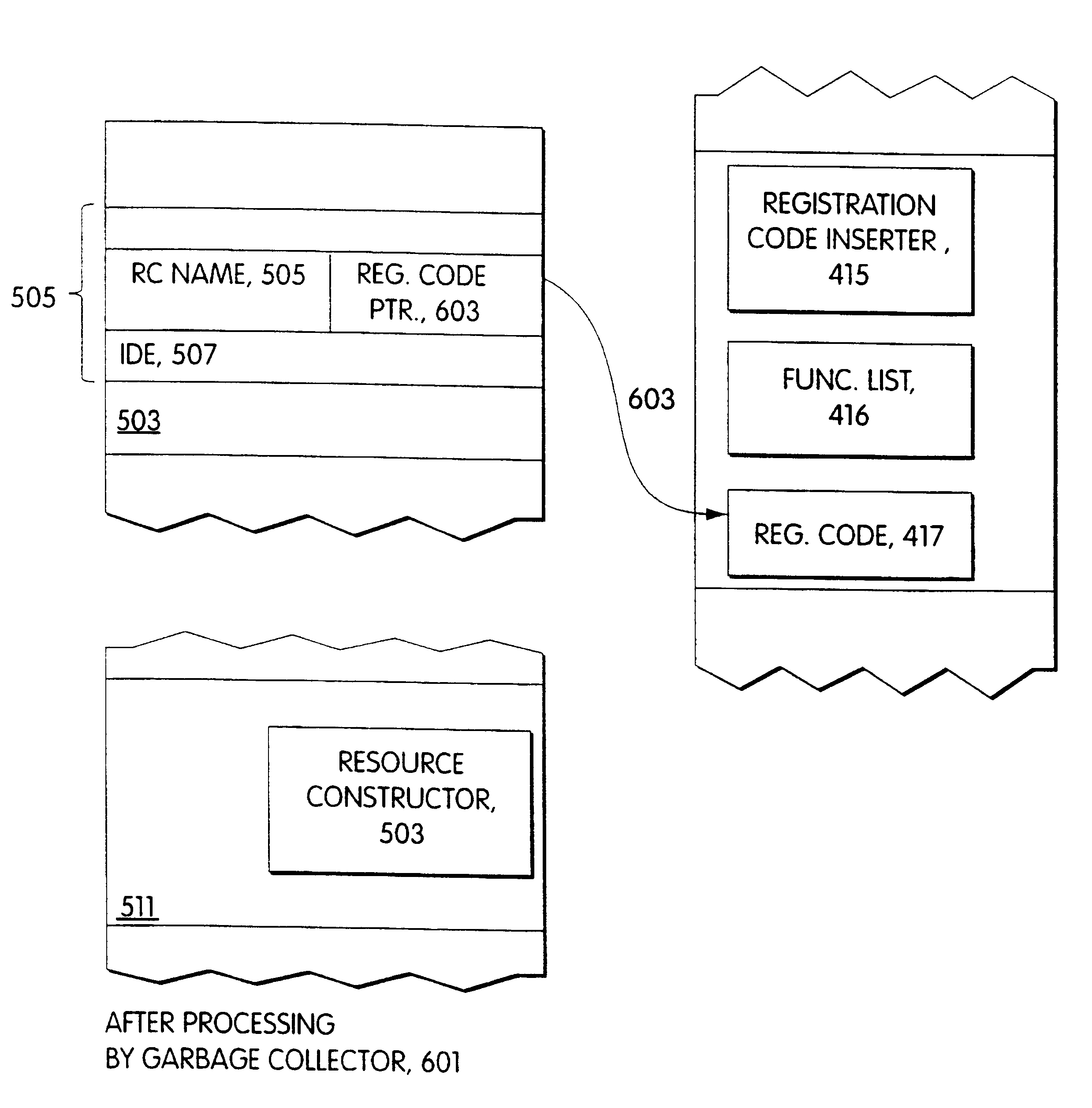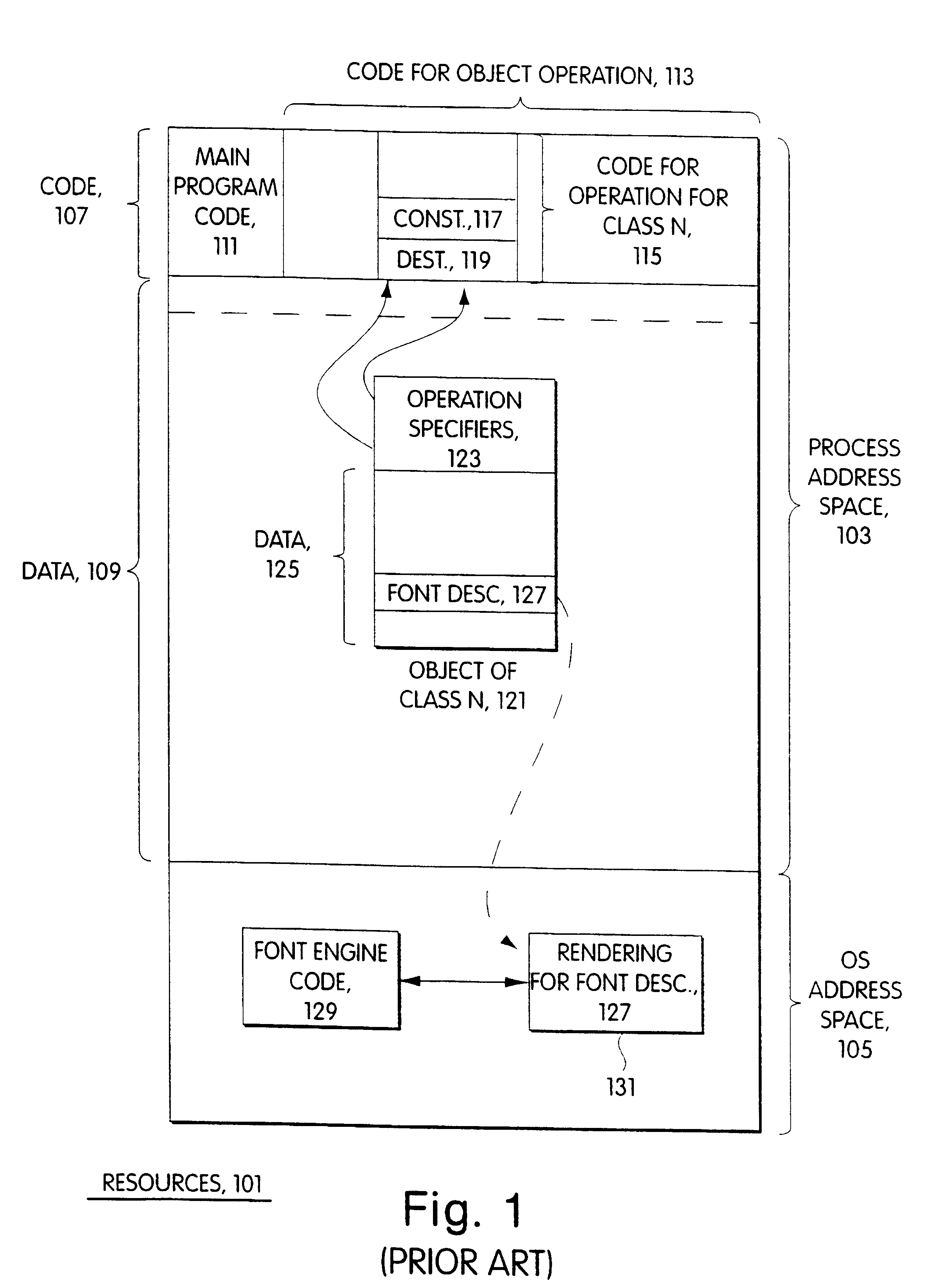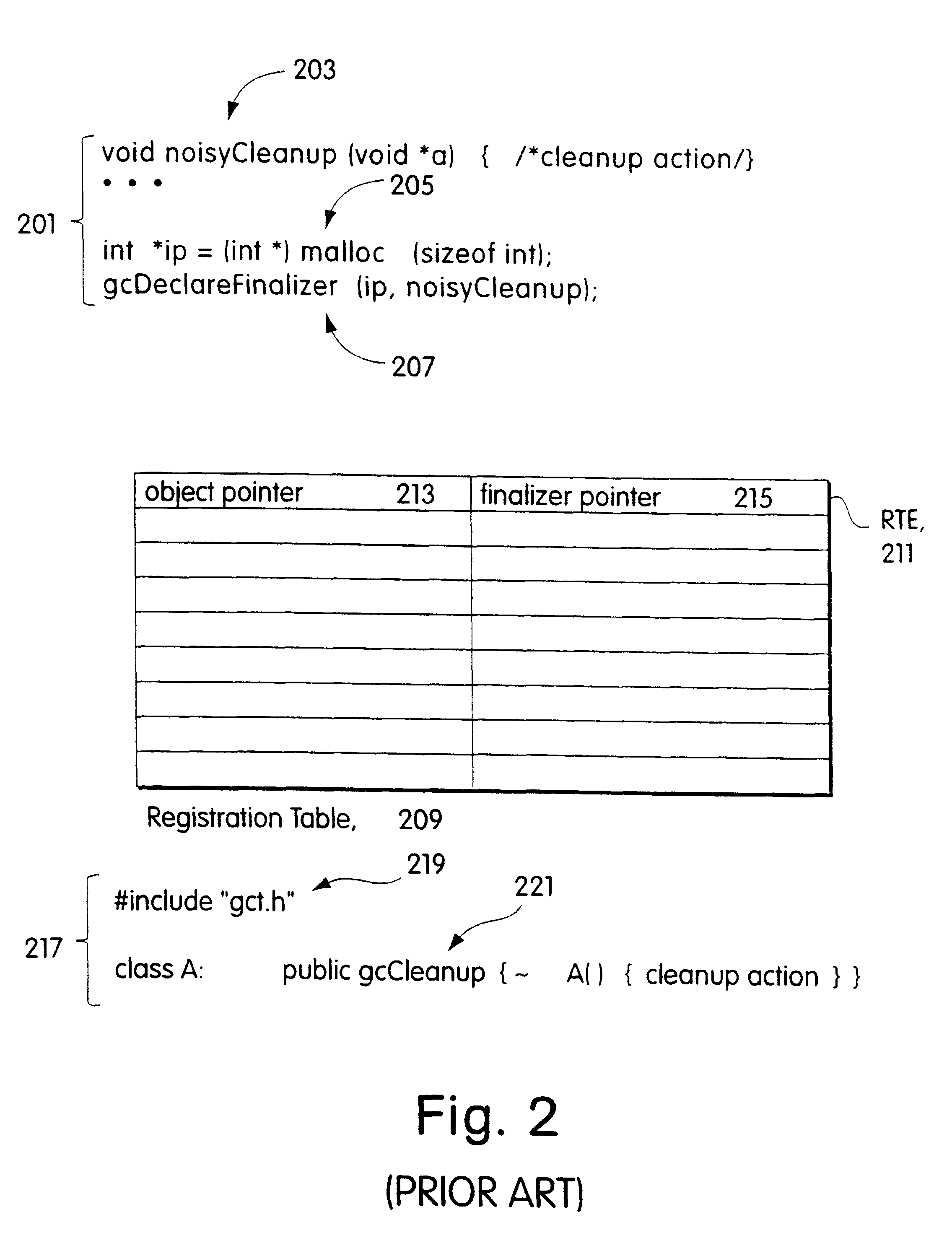Transparent garbage collection of resources
a garbage collector and transparent technology, applied in the field of transparent garbage collection of resources, can solve the problems of non-memory resources, inability to economically reimplement, and leakage of any of these resources,
- Summary
- Abstract
- Description
- Claims
- Application Information
AI Technical Summary
Benefits of technology
Problems solved by technology
Method used
Image
Examples
Embodiment Construction
: FIGS. 5-7
The preferred embodiment which will be described in the following is intended for use with code that is to run under the Windows brand operating system manufactured by Microsoft Corporation and with a particular set of classes that define the objects which represent the resources. The techniques used to implement the preferred embodiment are particular to the Windows environment and take advantage of detailed knowledge of the particular set of classes. As will be immediately apparent to those skilled in the art, however, these techniques or variations on them may be employed in other programming and execution environments and with other sets of classes.
In the Windows brand operating systems, as in many other operating systems, code for utility programs that are used by many user programs is contained in one or more dynamically-linked libraries, or DLLs. For example, the code for the class definitions for the objects that represent system resources in an object-oriented pr...
PUM
 Login to View More
Login to View More Abstract
Description
Claims
Application Information
 Login to View More
Login to View More - R&D
- Intellectual Property
- Life Sciences
- Materials
- Tech Scout
- Unparalleled Data Quality
- Higher Quality Content
- 60% Fewer Hallucinations
Browse by: Latest US Patents, China's latest patents, Technical Efficacy Thesaurus, Application Domain, Technology Topic, Popular Technical Reports.
© 2025 PatSnap. All rights reserved.Legal|Privacy policy|Modern Slavery Act Transparency Statement|Sitemap|About US| Contact US: help@patsnap.com



